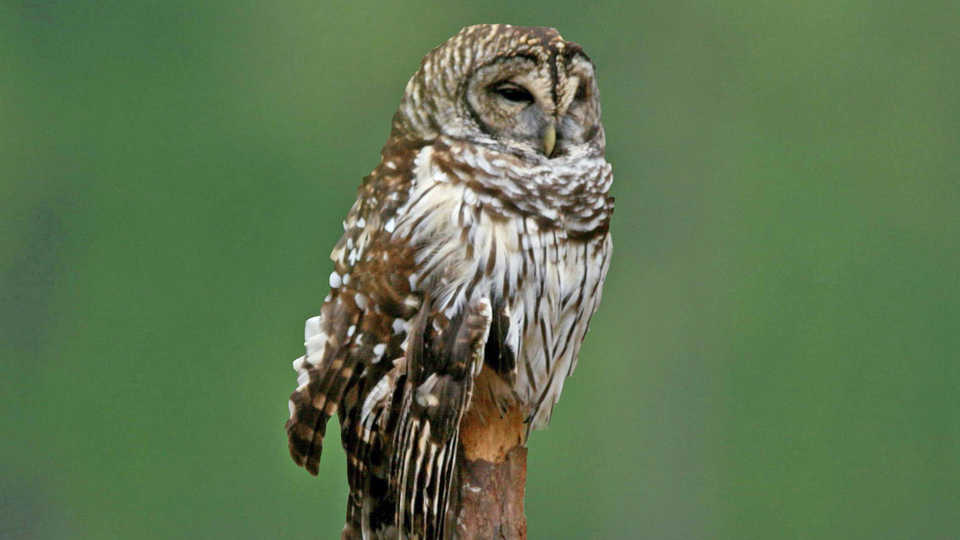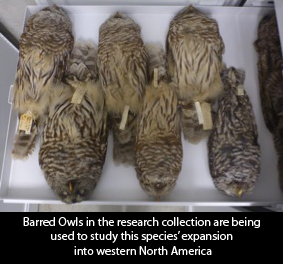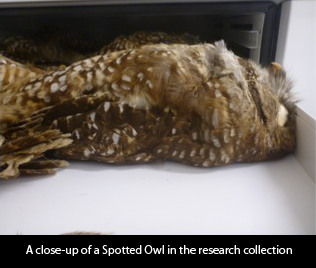
“Who-cooks-for-you, who-cooks-for-you-all!” Birders from the eastern United States probably recognize the phrasing associated with this bird’s call, but those from the west may not be familiar with that of the beautiful Barred Owl, Strix varia. Of course, it’s not actually saying these things, but we birders like to make up fun phrases that correspond to the calls that birds commonly make. This weekend in the Project Lab I’ve been preparing Barred Owls; I have a special love for this order of birds (called Strigiformes) and always enjoy a chance to see them up close.

Here in the west, and with a much smaller range of distribution, we have the close relative of the Barred Owl, the Spotted Owl, Strix occidentalis. It is equally as beautiful as the Barred Owl, but is not nearly as populous. In fact, two of the three subspecies have been placed under protection of the Endangered Species Act as a threatened species due to declining populations. However, it turns out that the Barred Owl has been spreading west and may be threatening Spotted Owls.

The Barred Owl has been expanding its territory along the northern United States/southern Canada and into Northern California, likely due to habitat changes due to settlers. Since 1990, the owl has come as far south as Marin County and the southern Sierra Nevada Mountains. Because they are more aggressive than Spotted Owls, it is thought that Barred Owls may be pushing Spotted Owls out of their territory. Scientists have questions about what’s really going on in this “invasion” of Barred Owls: are they different subspecies than their eastern relatives? Are they directly pushing Spotted Owls out of their native territories or are they simply filling in the niches left behind from a declining species? These questions, and countless more, will hopefully be answered thanks to museum specimens like the ones I’ve been preparing. I always find it fascinating how our world is constantly changing – who knows what will happen with these two species and if they’ll ever learn to cohabitate!
Laura Wilson
Curatorial Assistant and Specimen Preparator
Department of Ornithology & Mammalogy